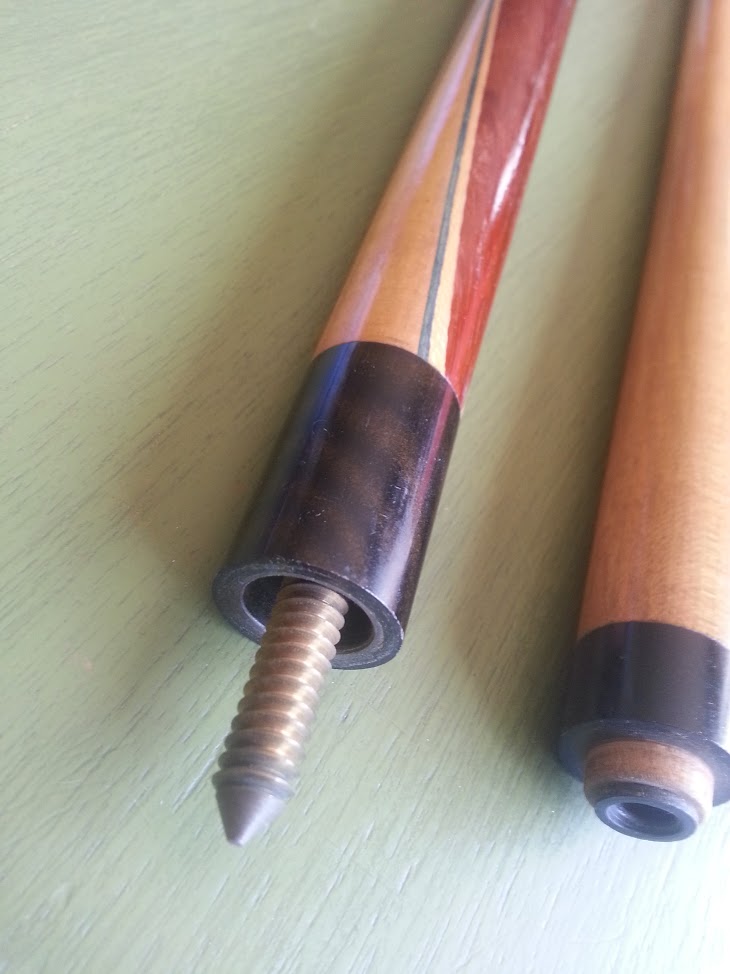I have a thing for antique butterfly cues, as well as antique cues in general. Recently I got this one and found some interesting features.
It has a pointed brass 5/16x14 pin, tortoise shell joint collar and shaft ring (like wartime Brunswick cues), ivory ferrule, ivory name plate inlaid in the butt (not pictured).
One thing that really struck me was the shaft insert. It is threaded black phenolic. Never saw that on one of these cues. (note, it may not actually be phenolic, it is a non-metal black material)
Anybody have any ideas what it is?
The original name on the name plate was removed (looks sanded off) and the previous owner put his name and address on it with an ink stamp like you would use for return address on an envelope. I tracked down that name and address, and he died in January of this year.
Cue is straight, sound, and in surprisingly good cosmetic condition as well.
Any ideas on the origins or maker of this cue might be?



Can't wait to shoot a few racks with it.
Last weekend I had one of my other antique butterfly cues out to shoot with and honestly, it was excellent. I was very surprised.
It has a pointed brass 5/16x14 pin, tortoise shell joint collar and shaft ring (like wartime Brunswick cues), ivory ferrule, ivory name plate inlaid in the butt (not pictured).
One thing that really struck me was the shaft insert. It is threaded black phenolic. Never saw that on one of these cues. (note, it may not actually be phenolic, it is a non-metal black material)
Anybody have any ideas what it is?
The original name on the name plate was removed (looks sanded off) and the previous owner put his name and address on it with an ink stamp like you would use for return address on an envelope. I tracked down that name and address, and he died in January of this year.
Cue is straight, sound, and in surprisingly good cosmetic condition as well.
Any ideas on the origins or maker of this cue might be?
Can't wait to shoot a few racks with it.
Last weekend I had one of my other antique butterfly cues out to shoot with and honestly, it was excellent. I was very surprised.
Last edited: